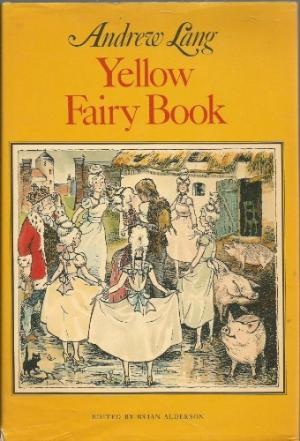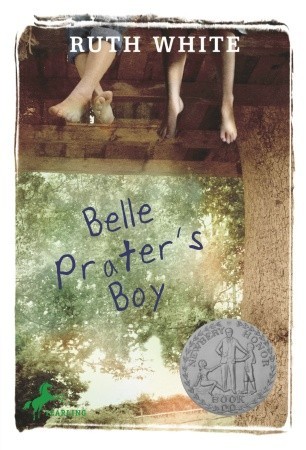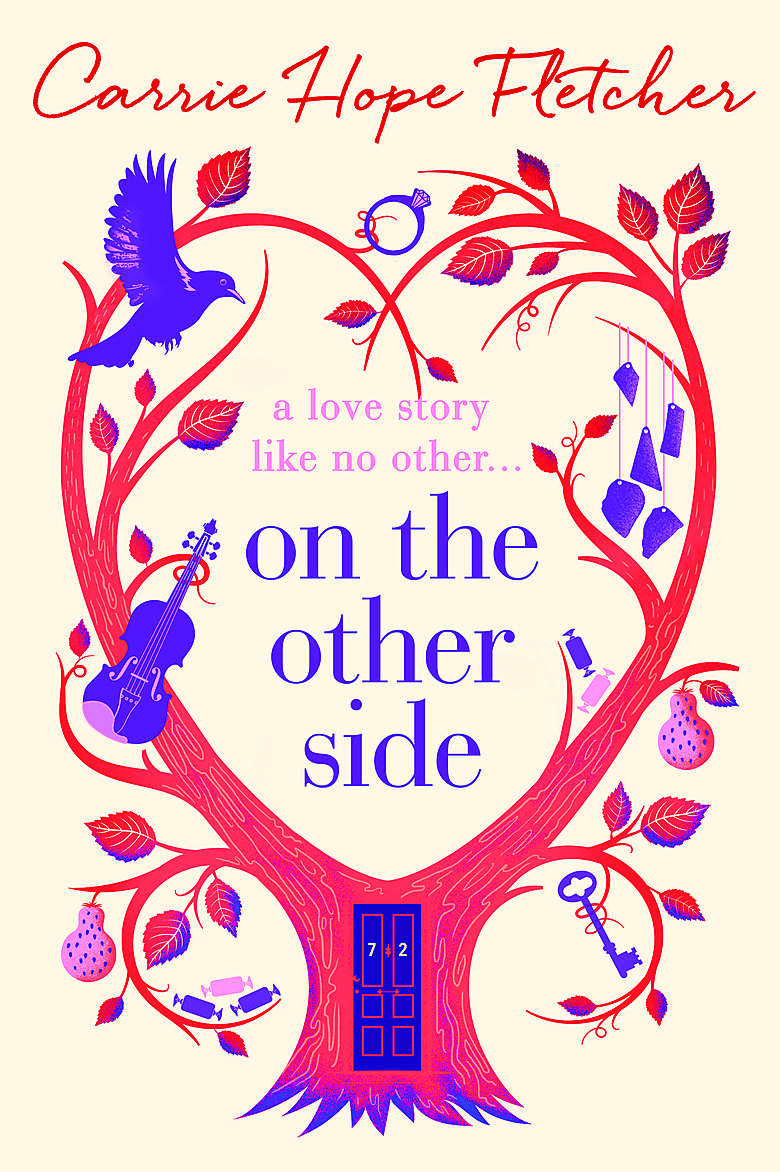[button color=”black” size=”big” link=”http://affiliates.abebooks.com/c/99844/77798/2029?u=http%3A%2F%2Fwww.abebooks.com%2Fservlet%2FSearchResults%3Fisbn%3D9780486216744″ target=”blank” ]Purchase here[/button]
In the Preface to the fourth of his Many-Colored Fairy Books, first published in 1894, Andrew Lang notes that the President of the Folk Lore Society, of which Lang was a member, condemned Lang and others who edited similar books. I quote:
In his popular and enduring dozen fairy books, Lang evidently got the last laugh over his disdainful colleague. For I doubt that anyone has done more to bring fairy tales and world folklore to the eyes and ears of English-speaking children. Hardly anyone remembers the name of the then-President of the Folk Lore Society, but thousands still bless the memory of Andrew Lang, whose fairy books remain available in an attractive facsimile edition from Dover Books, complete with H. J. Fords delicious illustrations. This book alone contains over 100 pictures and 48 stories, including some of the best-loved fairy tales in the world. Each one is told with charm and promises to give hungry young imaginations much to chew on.
As to whether fairies and Fairy Land truly exist, that is a question Mr. Langs preface leaves wide open. I hope you will read that too. But at least take a look at this list of romantic, scary, silly, and dashing tales, some of which are also daringly witty:
The Cat and the Mouse in Partnership, similar to How Two Went Into Partnership in Howard Pyles Wonder Clock. In neither story does the partnership end happily. Bottom line: You see that is the way of the world.
The Six Swans combines elements from several fairy tales I have read. It features six princes who are forced to flee for their lives when a princess is born, and a silent queen who risks disaster to save her brothers from a terrible curse.
The Dragon of the North is the Estonian story of a prince who deceives a witch maiden in order to learn the secret of how to destroy a great monster. After all the troubles with which the prince pays for this wrong, the tale asks: If you had been the prince, would you not rather have stayed with the pretty witch-maiden?
I would be shocked if you hadnt heard Andersens Story of the Emperors New Clothes, which points up the foolishness of being ashamed to speak your mind. A king, his courtiers, and the polite citizenry are all put to shame by the honest voice of a child: But he has nothing on!
The Golden Crab features that unhappiest of princes, who is enchanted to wear first a crabs shell, then an eagles feathers, thanks in part to the jealousy of his mother-in-law and the weakness of his Princess wife.
The Iron Stove is the Grimm tale of a prince imprisoned in an iron stove in the forest, and of a princess who is at first reluctant to set him free, but who later passes through many strange ordeals to be reunited to her husband.
The Dragon and His Grandmother is the merry tale of three soldiers who desert from an army and make a bargain with a dragon that involves an unanswerable riddle, a whip that causes money to jump up out of nowhere, and an elderly rescuer.
The Donkey Cabbage is truly a magical vegetable, but this story also features magical meat (a birds heart) and magical clothing (a cloak), each of which has a different fairy power. Using these three gifts a young hunter is able to travel widely, become rich, exact sweet revenge, and find true love.
The Little Green Frog proves to be a fairy in disguise, helping two royal lovers find each other, through a series of strange magical adventures.
The Seven-Headed Serpent is the Greek fairy-tale of a prince and his horse, both born with the aid of magic, who deliver a kingdom from the threat of a monster who devours twelve youths and twelve maidens every year.
The Grateful Beasts save a Hungarian youth named Ferko from the malice of his brothers, and they help him to achieve impossible tasks that a king has told him to do or die.
The Giants and the Herd Boy exchange favors in this Austrian story that includes an enchanted loaf of bread, a belt of invisibility, young love, and the rewards of being kind to a giant in distress.
The Invisible Prince sets out to rescue the Princess Rosalie from a lovestruck demon who refuses to take No for an answer. Among the multitude of unhappy-in-love characters in this complex story are the four sons of the fairy who rules over the four elements (earth, air, fire, and water). It also features a gruesome labyrinth of despair, a set of magic mirrors, a golden fountain that answers questions, a magic ring, and other fascinating works of magic.
The Polish story of The Crow is a tale from the dont scream, no matter how frightened you become school of horror, featuring a prince under a curse, and a princess who undergoes much to set him free.
How Six Men Travelled Through the Wide World is a variant of the familiar story, elsehwere called The Simpleton, about a man whose traveling companions are gifted in various ways. In this version, the six companions make off with a kings treasure by dint of having, among them, the worlds strongest man, the best marksman, the hardest blower, the fastest runner, and a man who can bring on a hard frost simply by uncovering his ear. Another version appears later in this very book, under the title of The Flying Ship.
In The Wizard King, an evil magician vies for the hand of a lovely Princess against a Prince in the form of a parrot.
The Nixy of this German tale is the spirit of a mill-pond who demands a millers newborn son in exchange for helping his business. Later, it eerily depicts the quest of a bereaved wife to get her husband back.
The Glass Mountain is a Polish tale about a youth who makes a gruelling climb up an impossible peak, in order to set an imprisoned princess free. The story also features a vicious eagle, a dead army that comes to life, and a golden apple-tree.
Alphege, or the Green Monkey has to do with a prince whose jealous stepmother gets him out of the way of her ambitions for her own son, by turning the prince into a monkey.
Fairer-than-a-Fairy suffers because the fairies are offended by her presumptuous (though accurate) name. She is forced to serve a horrid old fairy named Lagree, until she falls in love with Prince Rainbow. Imagine the uses to which this beauty uses her magical nut, pomegranate, and scent bottle!
The Three Brothers is a Polish variant of the oft-told tale of the youngest of three brothers who descends into the underworld, rescues a beautiful girl, is betrayed by his brothers, and makes his way back to the mundane world with the aid of strange creatures and a magic sword.
The North American Indian story The Boy and the Wolves, or the Broken Promise is a sad, cautionary tale about forgetting your promises. An older brother and sister abandon their little brother to be raised by wolves…until at last the child turns into a wolf himself!
The Hungarian story of The Glass Axe begins with a prince who, due to a fairys curse, must not be allowed to touch foot to the ground. When he does, he falls under the power of an evil fairy who orders him to chop down large numbers of trees with…guess what!
The Dead Wife, from an Iroquois story, is another eerie and sad story about a man who has a chance to bring back his beloved wife from the dead…and blows it.
In the Land of Souls, also from an American Indian tradition, a man follows his young bride to the land of the dead because he cant bear to live without her.
The White Duck is what a witch turns the queen into, before taking her form and making the king quite miserable. The part that will leave you wondering is what becomes of the white ducks brood of ducklings…
The Witch and Her Servants is the Russian tale of the Prince Iwanichs quest to save the fair maiden Militza. He travels far, encountering all kinds of creatures and dangers, to find her. Then he is given the impossible task of minding a witchs horses, one of which is Militza in disguise, and finally escapes with the aid of the witchs ill-treated servants. The lesson: a little kindness may be repaid someday!
The Magic Ring describes what becomes of a foolish lad named Martin, who spends his mothers last money to save a cat and dog from being destroyed, then saves a serpent princess, obtains a magic ring, and uses it to win a princess and a kingdomand then, with the aid of his cat and dog, wins them again!
The Flower Queens Daughter is an Austrian tale. I wont bother telling you what its about. I cant think of a better way to interest you in it than to describe the illustration of two dragons dancing what looks like a fast-stepand judging by the amount of smoke coming out of their nostrils, theyre really having a good time!
The Flying Ship, the Russian tale which I mentioned earlier, also has some choice illustrations in itI especially like the expression on the birdlike head of the flying ship, into which a simpleton gathers his strange but gifted crew.
The Snow-Daughter and the Fire-Son, in this Austrian story, are siblings whose magical inclinations make it difficult for them to be together. Nevertheless, they love each other well enough, until the tragic tableau is completed by a well-meaning king whose idea of hospitality brings them all to grief.
The Story of King Frost is another wicked-stepmother story, contrasting the fate of a wicked daughter and a good stepdaughter on a cold winters night.
The Death of the Sun-Hero is the Austrian story, probably based on Greek mythology, about the dreadful penalties the fairies exact when a mortal claims to be more than he is.
The Russian tale of The Witch features a brother and sister whose stepmother sends them to serve an evil witch. But once again, the witchs servants repay the kindnesses of the children by helping them to escape.
The Hazel-nut Child, from Austria, is the very reverse of a tall tale, with a diminutive hero who surprises everyone and makes his fortune.
The Story of Big Klaus and Little Klaus is an irreverently comic tale about a poor but clever farmer who outwits his neighbors.
Prince Ring is an Icelandic story in which a not-too-valiant prince gets a lot of help from a dog named (ahem) Snati-Snati. There are many things to like about this story, but my favorite aspect is the illustration captioned Prince Ring & Snati Overthrow the Trolls Ghost.
The Swineherd is actually a Prince who teaches a sharp lesson to a haughty princess. When she turns her nose up at his princely wooing, he conquers her in the disguise of a swineherd. Her undoing is rather harsh, perhaps.
Everyone knows How to Tell a True Princess, a folk tale so widespread that other fairy tales are constantly referring to it. If the name doesnt ring a bell, you may have heard of it under the title The Princess and the Pea.
The Blue Mountains is much the same sort of story as The Dragon and His Grandmother, seen earlier in this book. Those of you who wear Green on St. Patricks Day will appreciate the fact that, in this story, an Irishman proves superior to a Scot and an Englishman. Everyone else will be captivated by some of the most delightful illustrations in the book, including the one that appears on the front cover.
The Tinderbox enables a soldier to get a treasure, marry a princess, and even survive the gallowsall with the help of three dogs with ENORMOUS eyes.
The Witch in the Stone Boat features in another one of Fords most memorable illustrations. In the Icelandic tale, a witch steals the identity of a beautiful queen, who is twice allowed to return from the underworld to comfort her baby.
Thumbelina, which another one of Langs Fairy Books told under the title of Princess May-Blossom, is the Danish tale of an inch-tall girls wide-ranging adventures. I like the ending enough to quote it:
Farewell, farewell! said the little swallow with a heavy heart, and flew away to farther lands, far, far away, right back to Denmark. There he had a little nest above a window, where his wife lived, who can tell fairy-stories. Tweet, tweet! he sang to her. And that is the eway we learnt the whole story.
The Nightingale is a droll story, packed with subtle social-class humor, about a Chinese Emperors relationship with a songbird.
Hermod and Hadvor, from Iceland, are lovers separated by a witchs curse. Before it can be broken, the princess must burn a lions skin, and the prince must slay a rat.
For the Danish tale of The Steadfast Tin Soldier, I really would like to put in a plug for Disneys Fantasia 2000, in which this fairy tale is beautifully animated and set to the music of Dmitri Shostakovich. The cartoon version has a happier ending than the original story, but both are interesting adventures filled with ironic humor.
Blockhead-Hans is a youngest-of-three-sons who succeeds where his older and better educated brothers fail; in this case, by winning the hand and heart of a princess who cannot bear men who will not speak their mind. The humor of the story is as droll as the illustrations.
And finally, wrapping up the whole book as well as a series of stories that humorously skewer peoples social pretensions, is A Story About a Darning-Needle. In this tale, a broken darning-needle represents anyone whose pride blinds him or her to reality.
What prevents you from getting hold of this delightful book of fairy tales? They are short, pointed, well-told, and full of fun pictures. The book is Yellow. Are you?



